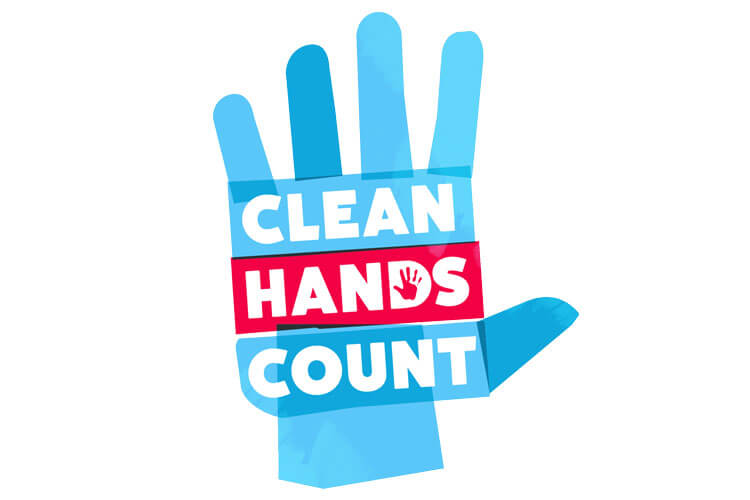One of the most crucial yet straightforward aspects of our routine at St. Lawrence Dentistry is hand hygiene.
It is a fundamental health and safety measure we do to protect everyone against disease transmission. It is so simple and basic, yet often misunderstood as a method to prevent microorganisms’ spread.
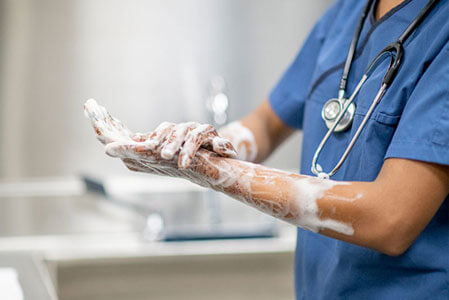
Our Mississauga dental office follows the guidelines for the Center for Disease Control (CDC). According to the CDC, hand hygiene is a fundamental method to prevent infection. It is a bare necessity and a crucial measure. Hand hygiene is a blanket term that includes both handwashing with plain soap or antimicrobial soap. Hand hygiene also consists of using alcohol-based hand rubs that do not require water use.
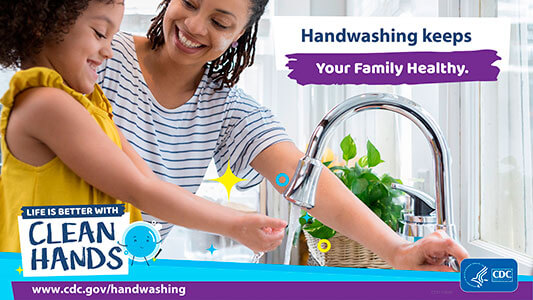
It’s essential to know the definitions of a few phrases. The term “hand washing” means cleaning hands with plain soap and water. An antiseptic handwash means washing hands with water and soap or other detergents containing antiseptic agents. An “alcohol-based hand rub” cleans hands with an alcohol-containing preparation of (70-95%) ethanol or isopropanol. Surgical hand hygiene/antisepsis is handwashing or using an alcohol-based hand rub before our dental surgical procedures.
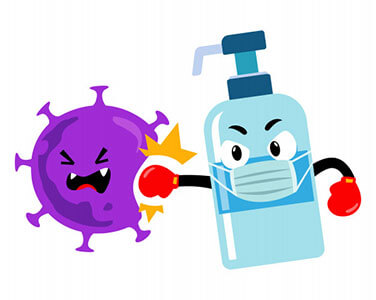
Another definition is irritant contact dermatitis, which is the development of dry, itchy, irritated areas on the skin due to frequent handwashing, gloving, or chemical exposure. Other contributing factors to contact dermatitis are hot water for handwashing, low humidity, cold temperatures, and lack of hand care (lack of use of hand lotions). The more brutal winters of Mississauga, Canada, make contact dermatitis a particular concern to our patients.
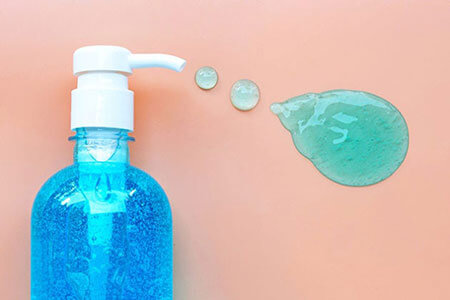
Your hands and all of your skin have both a superficial and deep layer. According to the CDC, there are different microbial flora types on your hands. Resident flora reside on the deeper layers of skin. They are difficult to remove, and are less likely to be pathogenic – the goal of hand hygiene is to reduce the amount of them. Transient flora is on the superficial layers of the skin and more easily acquired. You could get transient flora, for example, by opening a door. They are easier to remove, are more likely to be pathogenic, and hand hygiene aims to eliminate them. St. Lawrence Dentistry follows rigorous disinfection procedures to stop the spread of transient flora.

Public Health Ontario is our province’s premier health agency, and they provide guidelines and recommendations for hand hygiene. They say that hand hygiene is considered one of the most critical measures for reducing the risk of transmitting microorganisms. One staggering statistic is that every year it is estimated two million patients in North America get a hospital-related infection. Hand hygiene can reduce the spread of antimicrobial resistance and prevents healthcare-associated infections.
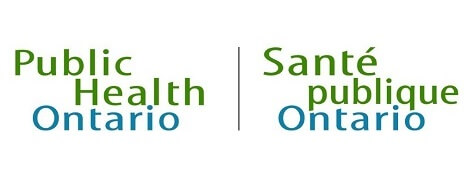
For a disease transmission to occur, several things must happen.
The following are the chain of events, and our goal is to break a link in the chain.
- Inadequate hand hygiene
- Contact with another person
- Pathogen transfer
- The second person has inadequate hand hygiene

For the transfer of a pathogen, someone must touch a contaminated surface. These pathogens must be capable of surviving a couple of minutes. Inadequate hand hygiene can be the source of a transfer. A “quicky wash” consisting of only putting a dab of a hand hygiene agent on for two seconds with a “quick rub” will not cover all the surfaces does not get into the nooks and crannies of your hands. Inappropriate agents can be a source of transfer. Using regular soap or, worse yet, making homemade handwash solutions are inappropriate. When infected hands come in contact with a susceptible person, there is disease transmission.
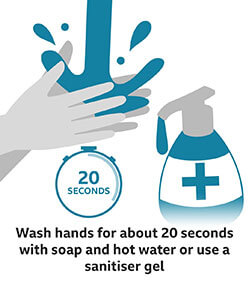
To break the chain of infections, we apply standard precautions. These are a set of rules that St. Lawrence Dentistry uses to reduce infections. These precautions protect personal and patients from contact with infectious agents. Under standard precautions, we assume every individual is potentially contagious and also susceptible to infections. In the area of COVID, we are also implementing “transmission-based precautions” in addition to standard precautions to mitigate transmission of COVID-19. At our Mississauga dental office, we follow the CDC summary of infection practices. These are recommendations for hand hygiene in a dental setting. Before we begin hand hygiene, our personal make sure to have clean and short nails, have no artificial nails, minimal jewelry for dental procedures, and no hand infection.

Among other instances, we perform hand hygiene:
- When hands are visibly soiled.
- After touching instruments, equipment and materials, and other objects likely to be contaminated with blood, saliva, or respiratory secretions.
- Before treating each patient, before putting on gloves, and immediately after taking off gloves.
Soap and water are required when hands are visibly soiled. Otherwise, you can use an alcohol-based hand rub. For surgical procedures, we do a surgical hand scrub before “donning” surgical surgeon’s gloves. It is crucial to understand when alcohol-based hand rubs are acceptable as opposed to hand washing. Here are some indications for hand hygiene per CDC guidelines. At the beginning of the day, we do a thorough wash for 1 minute. Before gloving, we wash hands or use an alcohol-based hand rub. When hands are visibly soiled or contaminated, we wash only (no use of alcohol rubs) before and after eating we wash only (no use of alcohol rubs. After personal functions, we wash only (no alcohol rubs).

Hand hygiene is a chief part of the response to COVID 19. The exact contribution of hand hygiene to the direct or indirect reduction of the coronavirus is unknown. However, hand hygiene mechanically removes pathogens, and laboratory data demonstrates that alcohol-based hand rub formulations in concentrations recommended by the CDC inactivate the SARS and Cov-2 virus. Alcohol-based hand rubs effectively reduce the number of pathogens present on a healthcare worker’s hands.
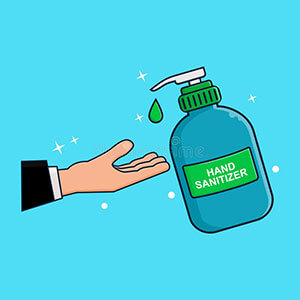
In the era of COVID-19, there are a few more inflection control steps that must be adhered to. Anytime a mask is adjusted or removed, hand hygiene must be performed. We have signage placed in our lobby to encourage hand hygiene at St. Lawrence Dentistry. We provide hygiene products for our valued Mississauga patients and visitor use. We encourage all visitors to perform hand hygiene with alcohol rubs when entering St. Lawrence Dentistry. We perform hand hygiene when donning and doffing gloves. We have posters that remind patients and personal that clean hands count. The Ontario government has many posters, fact sheets, and brochures available, which are downloadable for free, and they come in various languages.

Our hand washing technique for non-surgical procedures includes:
- Wetting hands and wrists.
- Applying soap to the quantity recommended by the manufacturer.
- Rub hands together and let lather for at least 20 seconds. If you sing ‘happy birthday to you’ twice over, that equals about 20 seconds. If you get in the habit of singing the song (inside your head!) pretty soon, you can gauge twenty seconds.
- Clean between the fingers and around nails, under fingernails and back of hands.
- Rinse well with soaking water.
- Dry hands thoroughly with a disposable paper towel.
- Use the paper towel to turn off the faucet— you do that to avoid recontamination.
It’s important to remember not to use alcohol-based hand rubs if your hands are visibly soiled.
When acceptable, our technique for hand hygiene using alcohol-based hand rubs includes:
- Dispense an amount of the product as specified by the manufacturer.
- Apply to the palm of one hand and rub hands together, covering all surfaces until dry. Ensure to include clasped fingers in the palm.
- Thoroughly work the hand rub under nails and into cuticles.
- Rub hands palm to palm, including wrists.
- Get in between fingers.
- Switch hands and repeat.
- Use enough rub to require at least 15 seconds to dry.
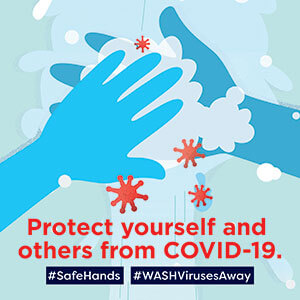
Our Hand Hygiene for Surgical Procedures is a little different. We perform surgical hand scrub before putting on sterile surgeon’s gloves. We scrub hands with an antimicrobial soap with persistent activity for 2-6 minutes. We sometimes use another surgical option to wash – this entails using the antimicrobial soap and then follow it by applying an alcohol-based hand rub with persistent activity.

Irritant contact dermatitis is an adverse reaction to frequent hand hygiene. Its symptoms are dryness, irritation, itching, cracking, and bleeding. The usual cause is frequent handwashing or use of specific antiseptic agents, which may disrupt protective lipids in the outer layer of skin, leading to the loss of some of the skin’s barrier function. It often happens in the winter months when it’s cold outside and low humidity (dry air). Allergic contact dermatitis is a subset of this condition. Its most common causes are fragrances and preservatives in hand hygiene agents.
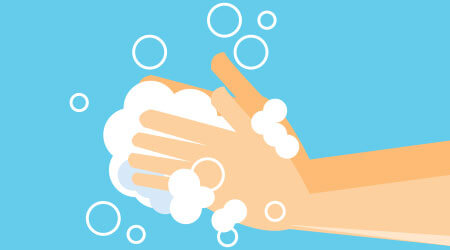
When it comes to products designed for health care personal, fortunately, the fragrances are generally very mild and pleasant. Hence they have a low incidence of allergic reactions. In winter months, frequent alcohol hand sanitizers are more gentle on your hands because they do not rub off your hands’ protective lipid layer. Also, alcohol hand rubs contain emollients to soothe and protect the surface of the skin.
Strategies to reduce hand irritation include:
- use alcohol hand rubs with emollients when indicated
- ensure hands are dry before putting on any gloves
- allow alcohol hand rubs to evaporate completely
- use hand lotions and other skin moisturizers
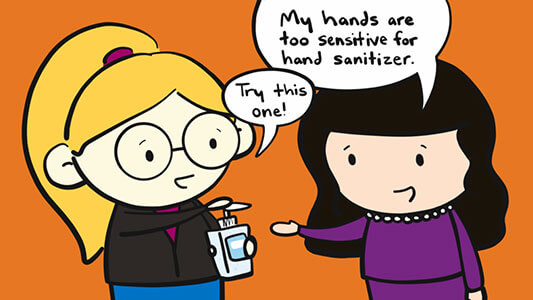
The use of hand lotions is more than a “look good, feel good, smell right” type of sensation. Hand lotions increase skin hydration, replace depleted skin lipids, and help maintain a skin barrier. Also, they help treat contact dermatitis and potentially enhance hand hygiene compliance. If your hands feel better, you are more likely to wash and take care of them. At St. Lawrence Dentistry, we only use hospital-approved hand lotions that are compatible between gloves, dental materials, and antimicrobial products. Many creams sold for home use are petroleum-based lotions that can weaken dental glove integrity and increase permeability.

In the era of COVID-19, it essential to understand that alcohol rubs with the active ingredients methanol and 1-propanol are not acceptable. Make sure the product you use contains 70-95% ethanol or isopropanol. Make sure the product label does not have misleading or unproven claims. If you are unsure, please bring it to our Mississauga dental office, and we can evaluate it.
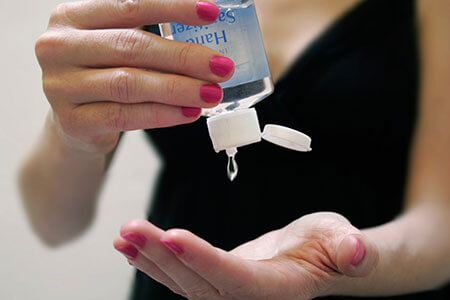
We hope you have enjoyed this critical topic. We are a Mississauga-based dental office, established in 1975, and take pride in serving our community.
Reference: (Marie Fluent: Hand Hygiene in the era of a global pandemic: viva learning, 2021)
- St. Lawrence Dentistry Looks Forward To St. Patrick’s Day! - March 12, 2025
- Understanding Dental X-Rays and Radiation: What You Should Know - January 13, 2025
- Happy New Year from St. Lawrence Dentistry! - December 30, 2024



